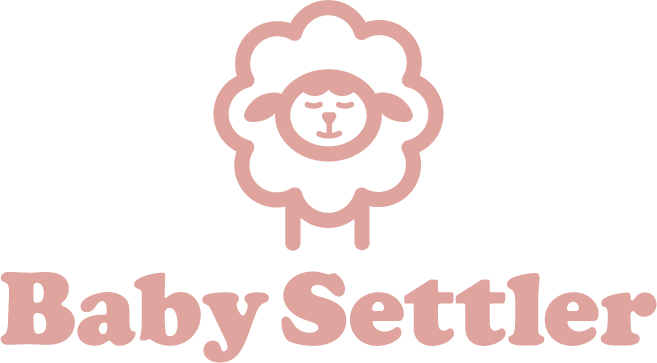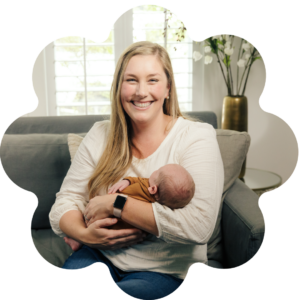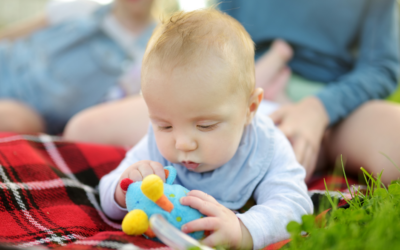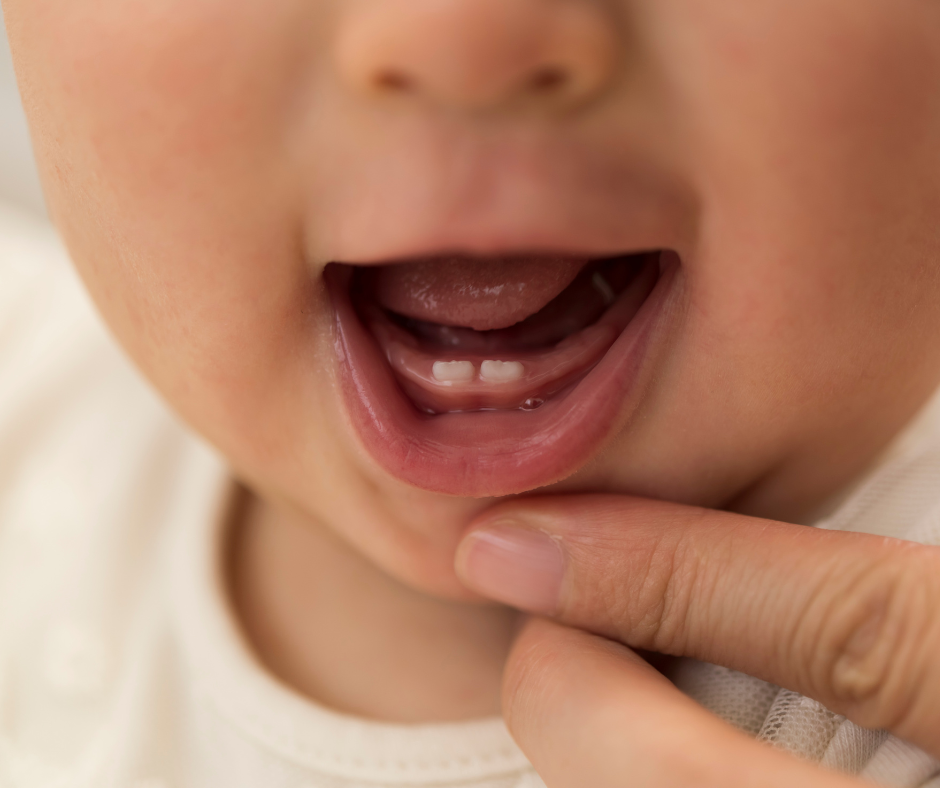
A significant milestone in your baby’s development is teething. Getting their first set of teeth doesn’t just hurt them – if you’re breastfeeding, the teething stage can be painful for you, too! We’ve got some tips to make this stage less challenging for both you and your little one.
What Are The Main Symptoms Of Teething?
There are a few signs that your baby is starting to get their first set of teeth:
- Red gums where the tooth is going to come out (the bottom two teeth are usually the first to appear).
- Flushed face or a bit of a rash on their cheeks.
- More drooling and spit than usual, which can cause redness on their face.
- Chewing on things.
- Sleep regression.
- They are more fussy than usual due to their gums being sore.
- Mild fever.
- You experience different sensations or pain during breastfeeding.
What Is The Normal Age For Teething?
Every baby is unique, so there is no “normal” age for teething. Some babies are even born with teeth.
Babies can begin teething as early as three months old, or later at nine months. For many little ones, teeth start appearing at six months of age.
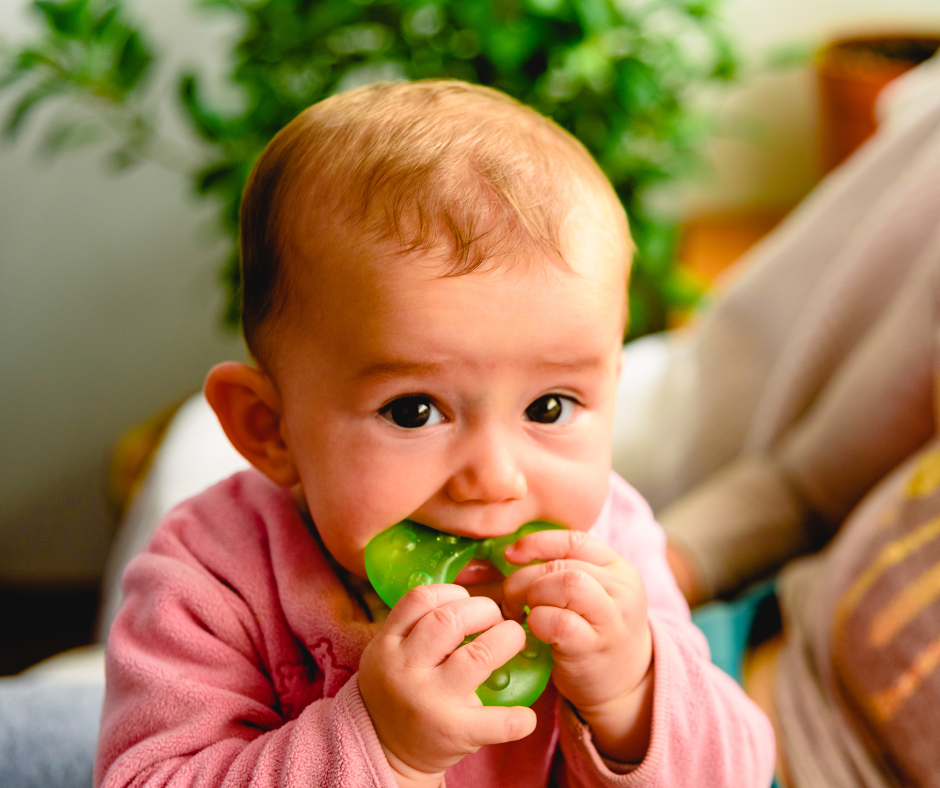
How Can I Ease My Baby’s Teething Pain?
Cold sensations can help ease teething pain, so take their teething rings and put them in the freezer for a bit. “Look for teethers made of solid rubber, and avoid liquid-filled teething rings or plastic objects that could break,” advises the American Dental Association.
You can also take a wet washcloth, twist it, and freeze it before giving it to your little one.
The NHS advises giving babies six months and older fruit to chew on, such as slices of melon (you can pop this in the fridge to cool it down, too).
Give your baby tons of attention to distract them from the pain including extra cuddles as it’s more difficult for them to self-soothe during this time. Play with them and give them a variety of toys during tummy time.
Do Breastfed Babies Nurse More When Teething?
For some babies yes, for others no.
Breastfeeding is about more than just getting fed – it’s a source of comfort. As your little one is sore, they may want to breastfeed more to be soothed.
Their swollen and painful gums may also cause them to breastfeed more as nursing stimulates their gums.
For other babies, because their gums are sore, they may be extra fussy and have difficulty latching and being calm enough to breastfeed.
How Long Does Infant Teething Last?
After your baby gets their first tooth, they’ll get two new teeth every couple of months until they’re two years old. As more teeth come up, the less stressful and painful the process will be.
Healthline adds that the teething period doesn’t officially end until your child has their molars. “By the time your child is three years old, they should have 20 teeth, which is a full set of primary or baby teeth.”

When Should You Stop Breastfeeding?
WHO recommends that babies be exclusively breastfed for the first six months of life. After six months, other foods and drinks can be incorporated along with breast milk until two years when solid food can completely replace breast milk nutritionally.
When to wean your baby is a personal decision, though. But, don’t just stop completely as this can lead to mastitis; you’ve got to go through a weaning process. “Whenever you decide to start weaning your child off breast milk, it’s best to do it gradually. Stopping breastfeeding suddenly could put you at risk of engorgement, blocked ducts or mastitis, as well as being an abrupt change for your baby’s digestive and immune systems to cope with,” explains Medela.
Does Breastfeeding Affect Teeth Alignment?
According to pediatric dentist, Growing Great Grins, breastfeeding your baby does not negatively impact their teeth development, “…choosing to breastfeed instead of bottle-feeding may help reduce the risk of this disruption and allow the bite to develop as nature intended. In fact, research shows that babies who were breastfed for the first six months had a lower chance of developing bite alignment concerns.”
However, it’s important to realize that many things can impact the alignment of a child’s teeth including genetics and prolonged thumb sucking.
How To Deal With Breastfeeding Pain
Many women think that the teething milestone signals the end of breastfeeding – this does not have to be the case. As discussed above, you can continue breastfeeding throughout the first year and beyond.
Try these tips to help you continue breastfeeding during the teething phase:
- Ensure A Good Latch
“When a baby is properly latched, their mouth takes in more of the breast than just the nipple, and their tongue sticks out to cover the lower gums and teeth. So, while they are actively latched and feeding, they cannot bite,” explains Verywell Family. So, a good latch is essential during this period.

- Oral Hygiene
You’ve got to start teeth brushing as soon as the first tooth appears! Use a soft infant toothbrush. Simply wipe their gums with a clean washcloth.
- Take Care Of Your Nipples
While teething, your baby may cause more damage to your nipples through chewing and biting. Take care of your nipples so that you don’t get an infection by using nipple cream, washing your nipples, and allowing them to air dry.
- Soothe Their Gums
Soothe your baby’s gums before breastfeeding by giving them a cold teething ring. You can also gently massage their gums with your (clean) finger.
Coming out of the newborn phase presents a whole host of new challenges, including teething and sleep regressions. To help you through this period, we developed 4-6 Months Made Simple! This online parent course is your guide to navigating older babies’ milestones, including tips to help baby sleep and how sleep and breastfeeding are connected.
